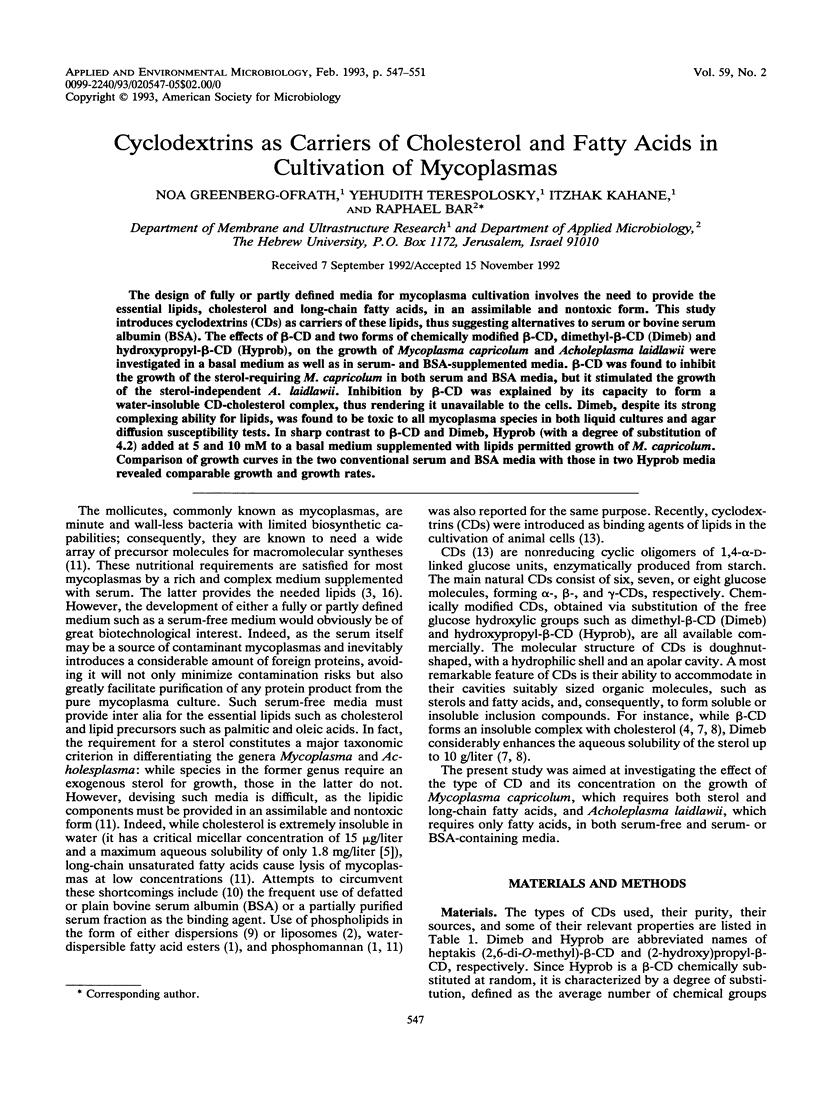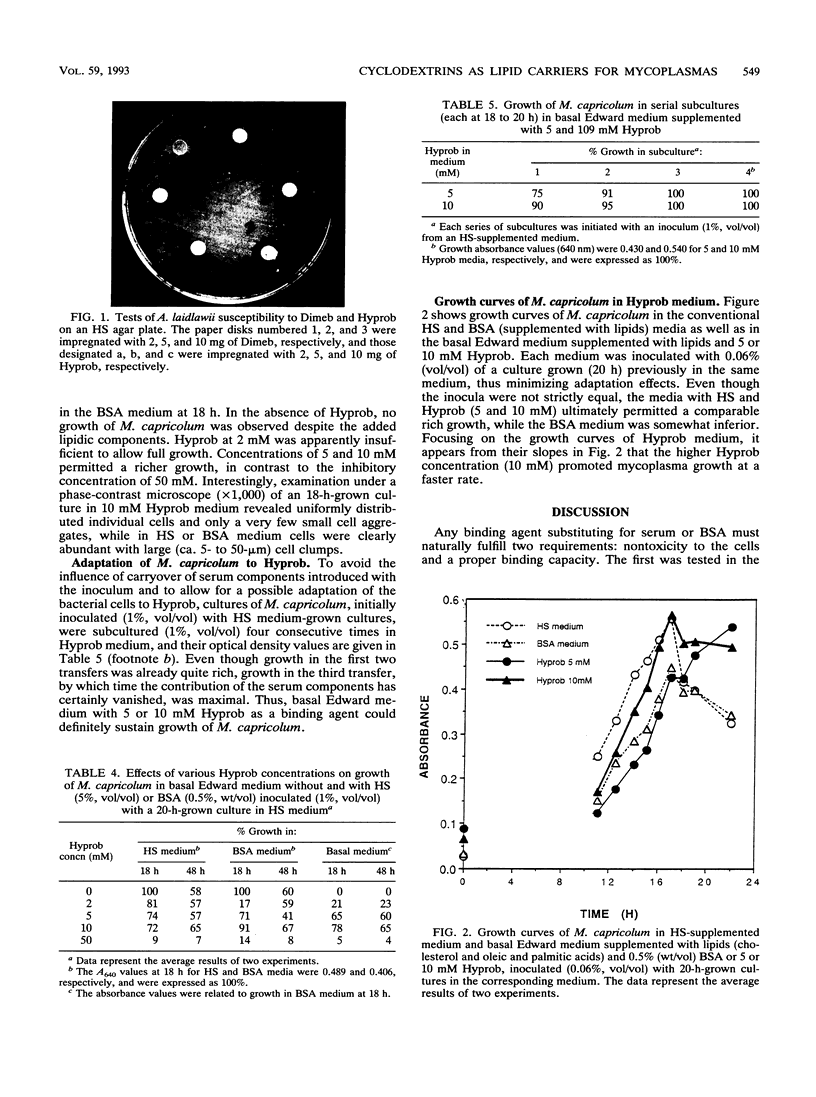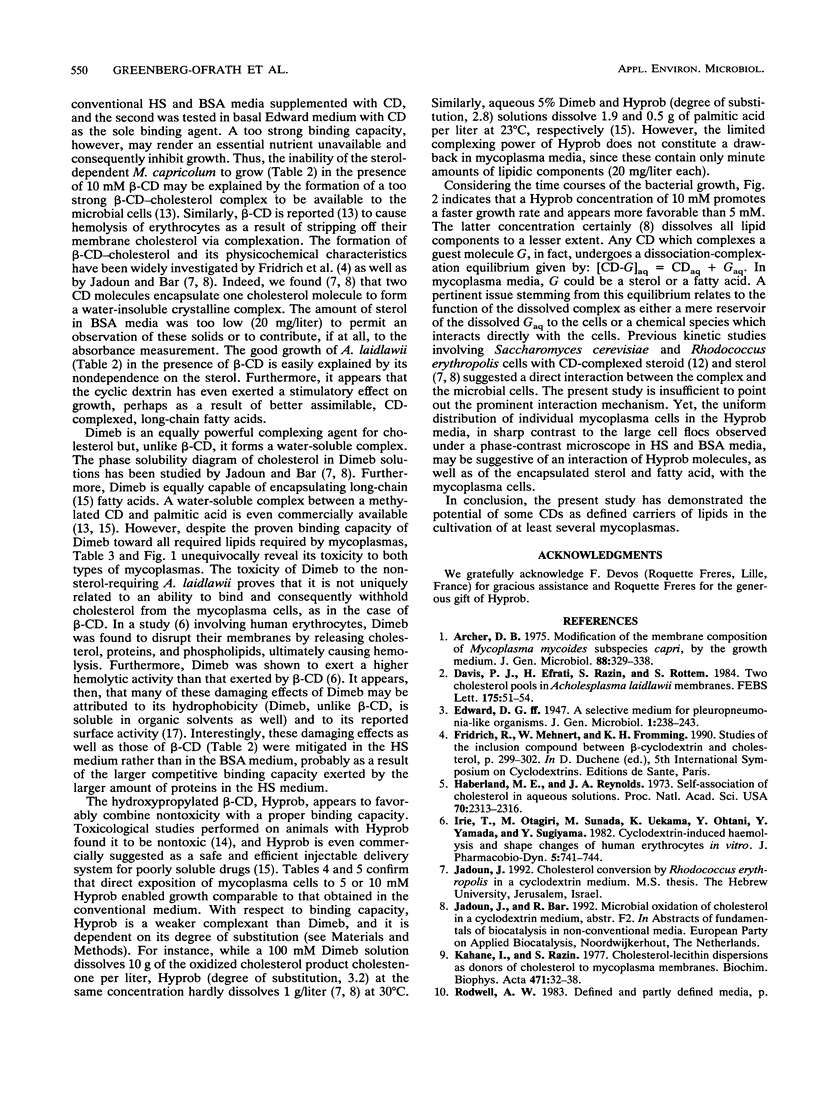Abstract
The design of fully or partly defined media for mycoplasma cultivation involves the need to provide the essential lipids, cholesterol and long-chain fatty acids, in an assimilable and nontoxic form. This study introduces cyclodextrins (CDs) as carriers of these lipids, thus suggesting alternatives to serum or bovine serum albumin (BSA). The effects of beta-CD and two forms of chemically modified beta-CD, dimethyl-beta-CD (Dimeb) and hydroxypropyl-beta-CD (Hyprob), on the growth of Mycoplasma capricolum and Acholeplasma laidlawii were investigated in a basal medium as well as in serum- and BSA-supplemented media. beta-CD was found to inhibit the growth of the sterol-requiring M. capricolum in both serum and BSA media, but it stimulated the growth of the sterol-independent A. laidlawii. Inhibition by beta-CD was explained by its capacity to form a water-insoluble CD-cholesterol complex, thus rendering it unavailable to the cells. Dimeb, despite its strong complexing ability for lipids, was found to be toxic to all mycoplasma species in both liquid cultures and agar diffusion susceptibility tests. In sharp contrast to beta-CD and Dimeb, Hyprob (with a degree of substitution of 4.2) added at 5 and 10 mM to a basal medium supplemented with lipids permitted growth of M. capricolum. Comparison of growth curves in the two conventional serum and BSA media with those in two Hyprob media revealed comparable growth and growth rates.
Full text
PDF




Images in this article
Selected References
These references are in PubMed. This may not be the complete list of references from this article.
- Archer D. B. Modification of the membrane composition of Mycoplasma mycoides subsp. capri by the growth medium. J Gen Microbiol. 1975 Jun;88(2):329–338. doi: 10.1099/00221287-88-2-329. [DOI] [PubMed] [Google Scholar]
- Davis P. J., Efrati H., Raxin S., Rottem S. Two cholesterol pools in Acholeplasma laidlawii membranes. FEBS Lett. 1984 Sep 17;175(1):51–54. doi: 10.1016/0014-5793(84)80567-0. [DOI] [PubMed] [Google Scholar]
- Haberland M. E., Reynolds J. A. Self-association of cholesterol in aqueous solution. Proc Natl Acad Sci U S A. 1973 Aug;70(8):2313–2316. doi: 10.1073/pnas.70.8.2313. [DOI] [PMC free article] [PubMed] [Google Scholar]
- Irie T., Otagiri M., Sunada M., Uekama K., Ohtani Y., Yamada Y., Sugiyama Y. Cyclodextrin-induced hemolysis and shape changes of human erythrocytes in vitro. J Pharmacobiodyn. 1982 Sep;5(9):741–744. doi: 10.1248/bpb1978.5.741. [DOI] [PubMed] [Google Scholar]
- Kahane I., Razin S. Cholesterol-phosphatidylcholine dispersions as donors of cholesterol to Mycoplasma membranes. Biochim Biophys Acta. 1977 Nov 15;471(1):32–38. doi: 10.1016/0005-2736(77)90390-x. [DOI] [PubMed] [Google Scholar]



